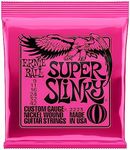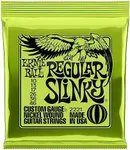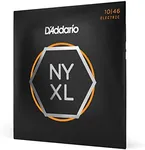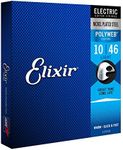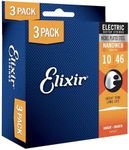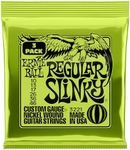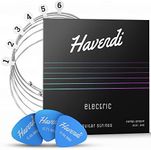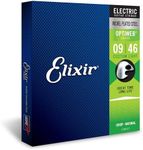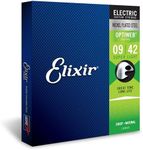Buying Guide for the Best Electric Guitar Strings
Choosing the right electric guitar strings can significantly impact your playing experience and the sound of your guitar. The strings you choose will affect the tone, playability, and feel of your instrument. It's important to consider your playing style, the genre of music you play, and your personal preferences when selecting strings. Understanding the key specifications of electric guitar strings will help you make an informed decision that enhances your musical expression.GaugeThe gauge of a string refers to its thickness, usually measured in thousandths of an inch. This is important because it affects the playability and tone of the guitar. Lighter gauge strings (e.g., .008 to .010) are easier to play, making them ideal for beginners or those who prefer bending notes easily. They produce a brighter tone but may lack some depth. Medium gauge strings (e.g., .011 to .013) offer a balance between playability and tone, suitable for a wide range of styles. Heavier gauge strings (e.g., .014 and above) provide a fuller, richer tone and are often preferred by players who focus on rhythm or play in lower tunings. Choose a gauge that matches your playing style and comfort level.
MaterialElectric guitar strings are made from various materials, each affecting the tone and feel. Nickel-plated steel is the most common, offering a balanced tone with a bright edge. Pure nickel strings provide a warmer, vintage tone, suitable for classic rock and blues. Stainless steel strings are known for their bright tone and durability, making them ideal for players who want a long-lasting string. Cobalt strings offer a stronger magnetic relationship with pickups, resulting in a higher output and a more dynamic sound. Consider the genre of music you play and the tone you desire when selecting the material.
CoatingCoated strings have a thin layer of polymer that protects them from dirt, sweat, and corrosion, extending their lifespan. This is important for players who want to reduce the frequency of string changes. Coated strings tend to have a smoother feel and can reduce finger noise, but they may slightly alter the tone compared to uncoated strings. If you play frequently or have acidic sweat, coated strings might be a good choice for you. However, if you prefer a more traditional feel and tone, you might opt for uncoated strings.
Winding MethodThe winding method refers to how the outer wire is wrapped around the core of the string. This affects the string's tone and feel. Roundwound strings are the most common, offering a bright tone and textured feel. They are versatile and suitable for most styles. Flatwound strings have a smooth surface, producing a warmer, mellower tone, often preferred for jazz and blues. Halfwound or groundwound strings are a compromise between the two, providing a smoother feel than roundwound but with more brightness than flatwound. Choose a winding method that complements your playing style and desired tone.
String CoreThe core of a string can be either round or hexagonal, affecting the string's flexibility and tone. Round core strings offer a vintage feel with a warmer tone and are more flexible, making them easier to bend. Hex core strings are more common, providing a brighter tone and more consistent intonation. They are also more durable and less prone to breakage. If you prefer a traditional sound and feel, round core strings might be suitable. For a more modern sound with reliable tuning stability, hex core strings are a good choice.
